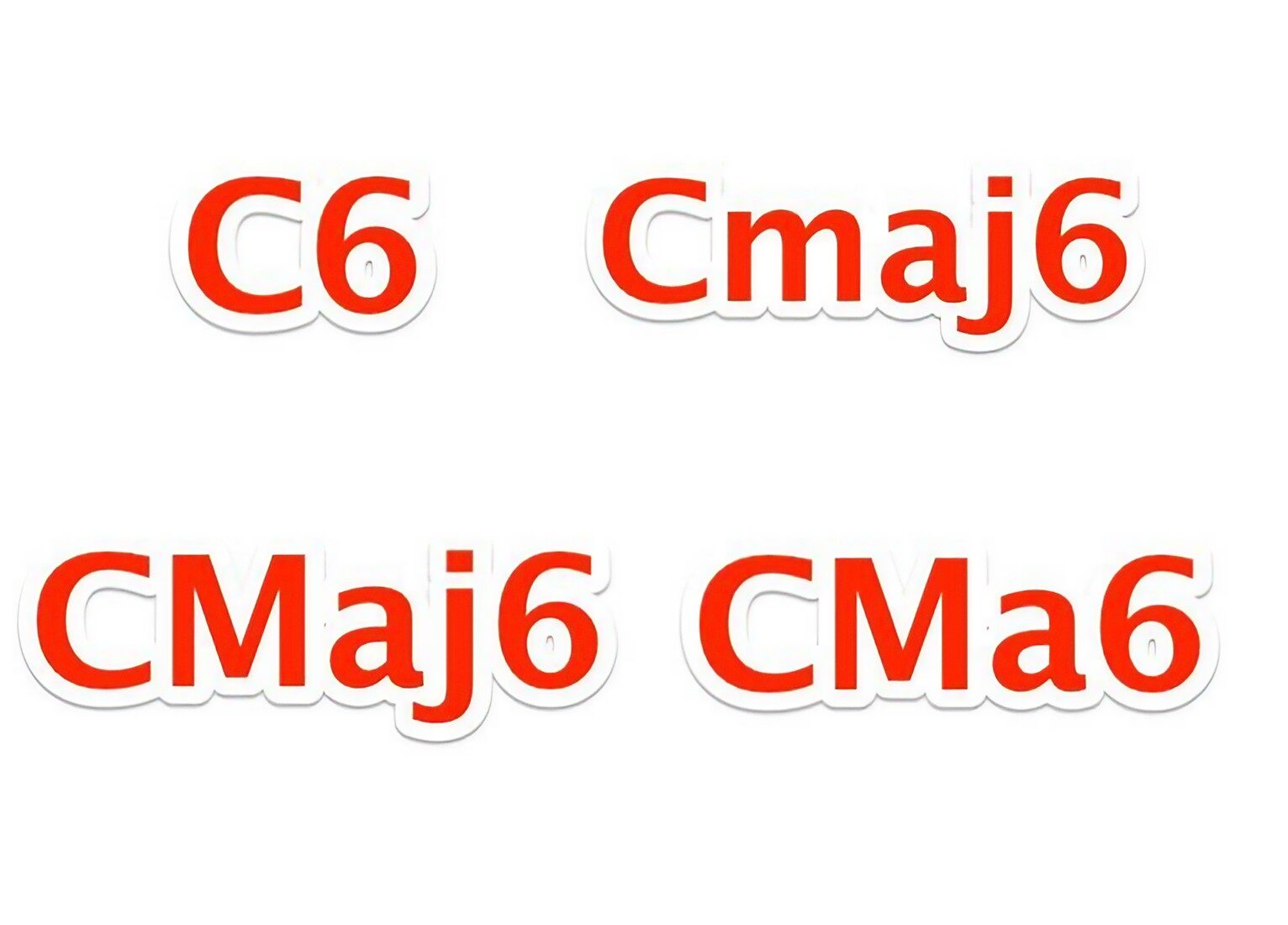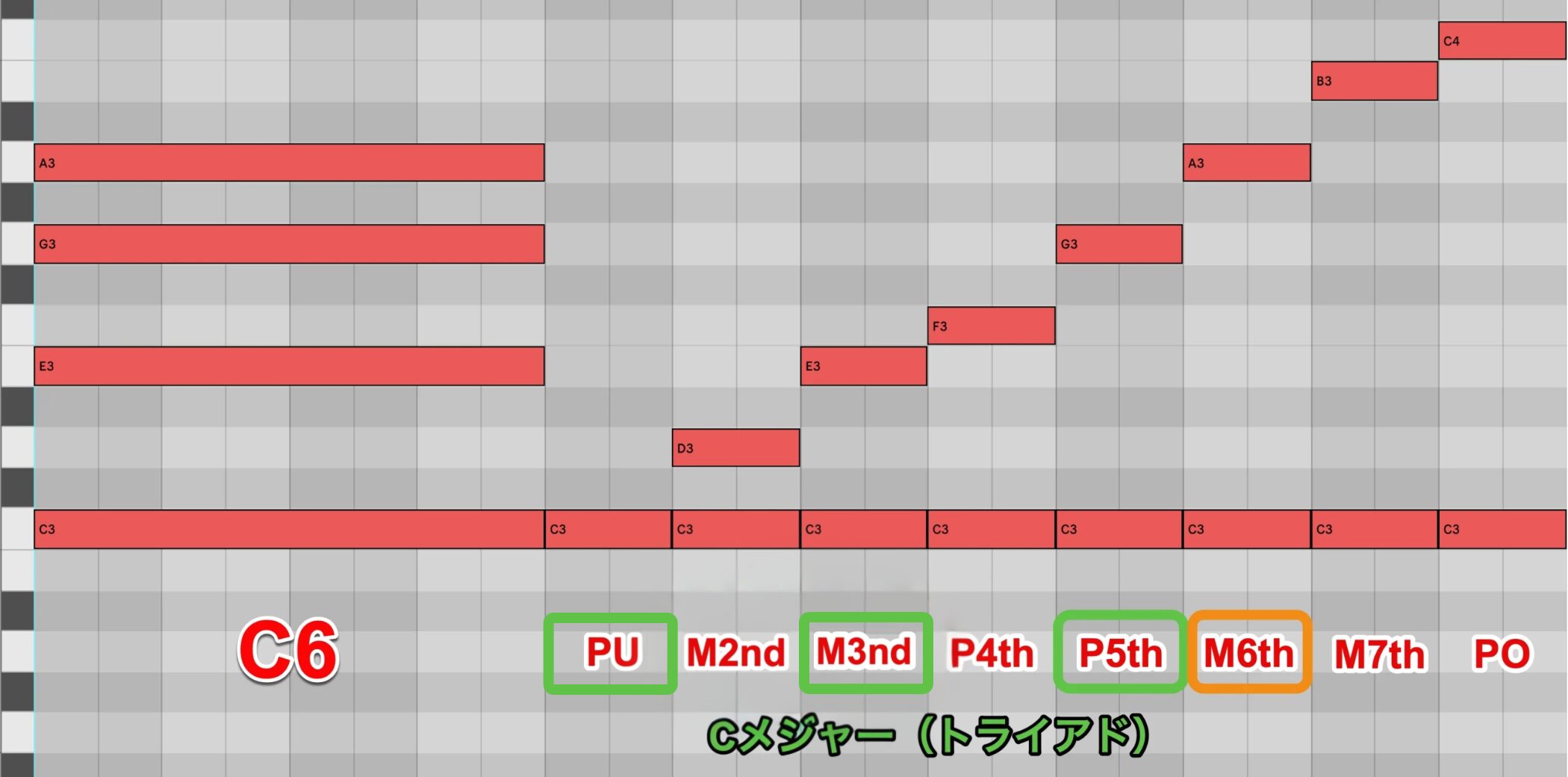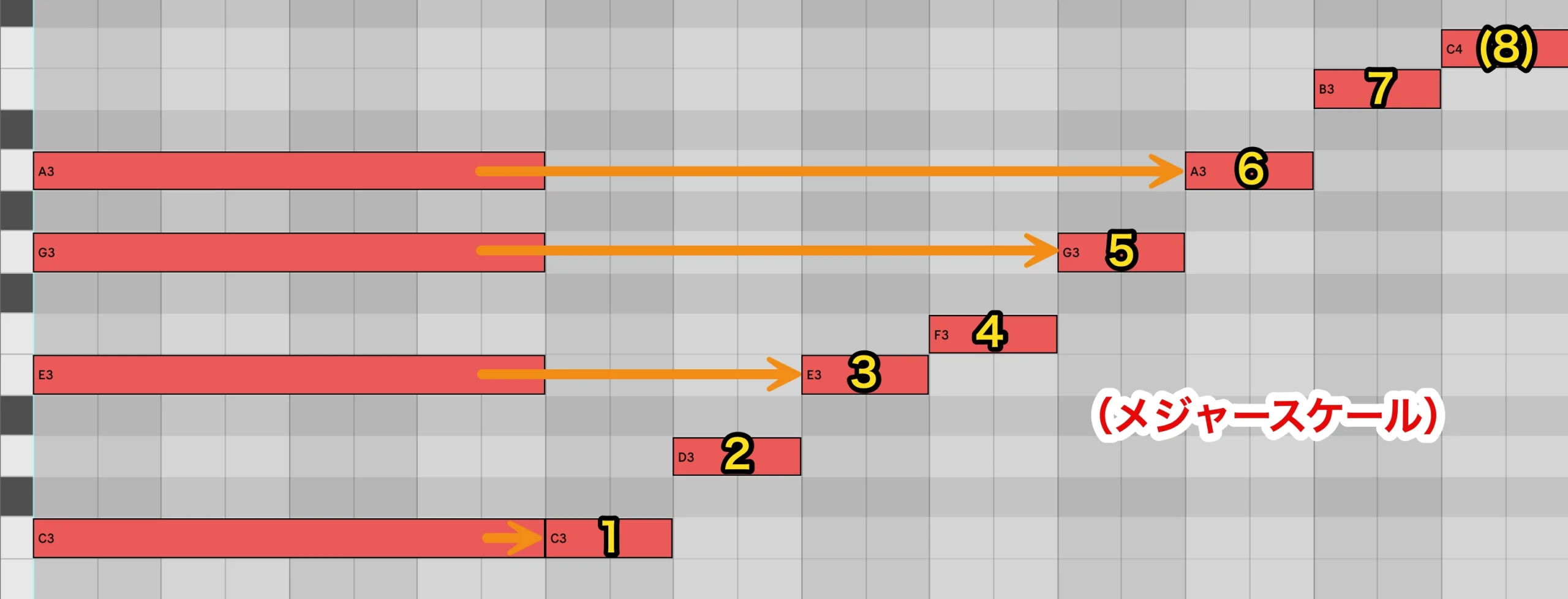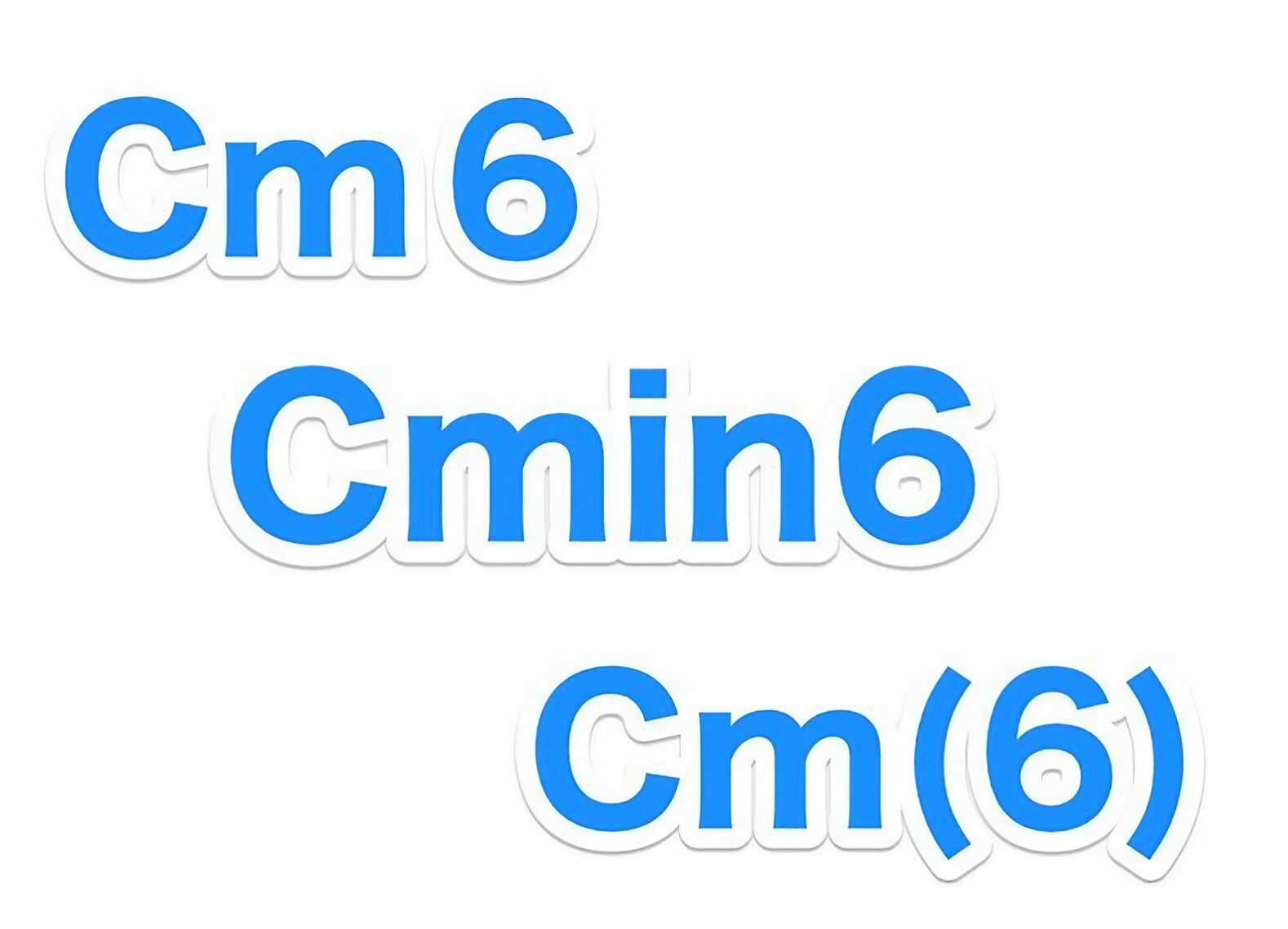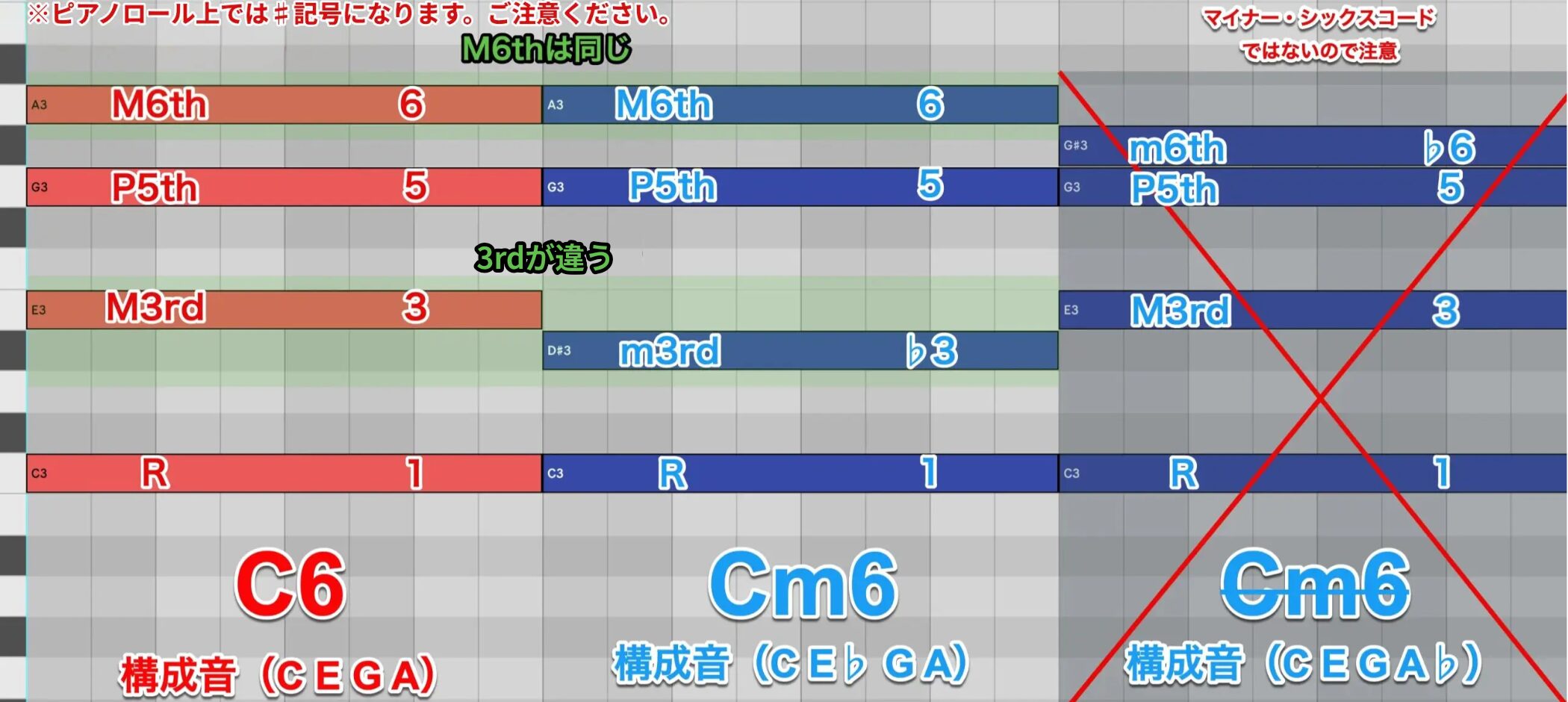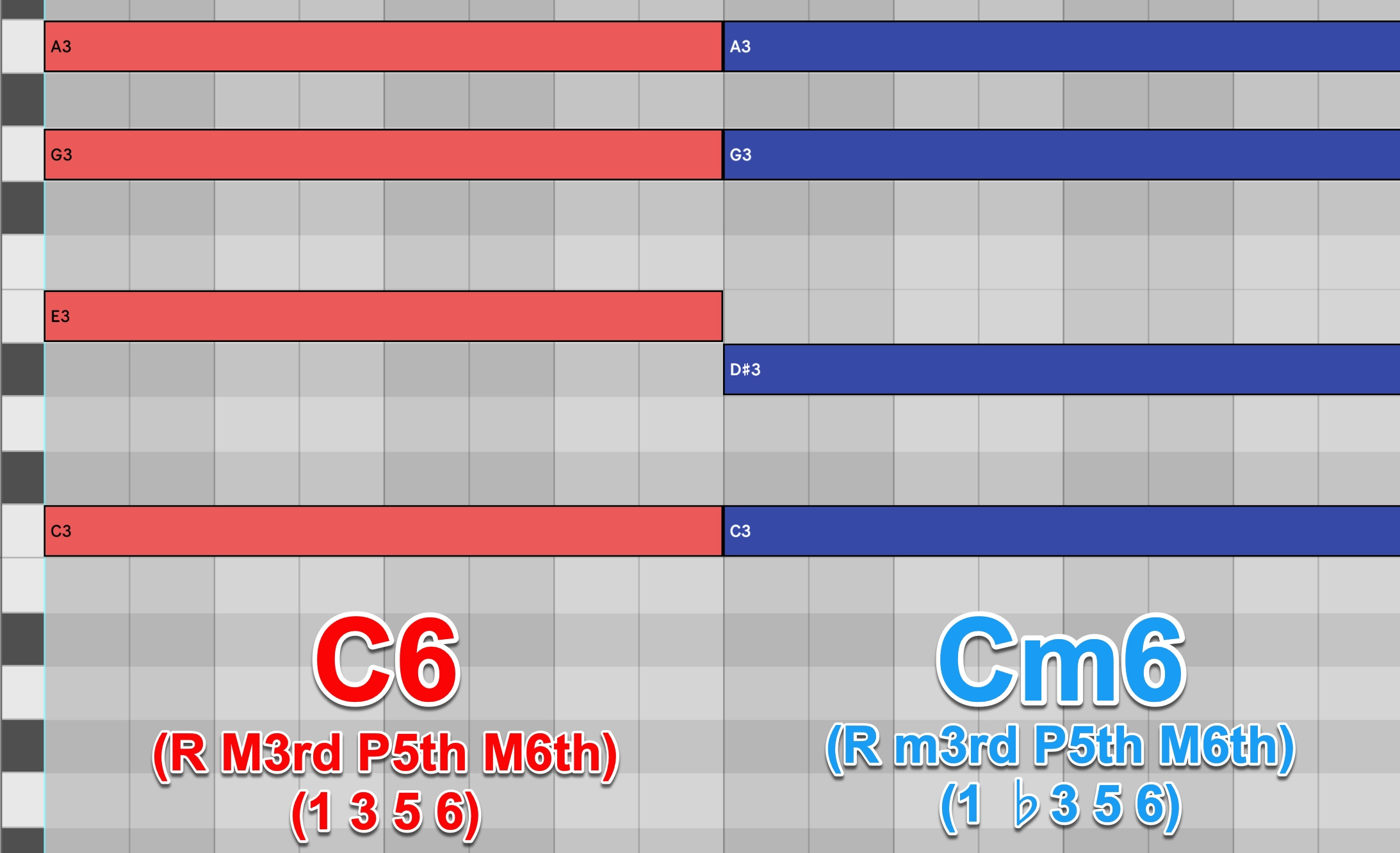メジャー・シックス/マイナー・シックス コード (前編)/音楽理論講座
シックスコードの学習に当たって
前回までアボイド・ノートを中心に学んできましたが、今回は新たなコード、「6」を加えるシックスコードについて学んでいきましょう。
シックスコードもアボイド・ノートと共に理解しておきたい内容です。
関連性については次回取り上げますので、今回はまずコードを覚えてください。
学習にあたり、特に以下の回の知識が前提となります。
未読の方や忘れてしまった方は、ぜひ参照しながら進めてください。
メジャー・シックスコードの成り立ち
シックスコードは4和音のコードの中でも、少し特殊なコードです。
まずは、メジャー・シックスのサウンドを確認してみましょう。
コードの構成音が順に鳴った後、和音が鳴ります。
人によっては、古めかしく感じたり、オシャレに感じたり、穏やかさや柔らかさを感じたりと、さまざまな印象を受けると思います。
メジャー・セブンスコードの後に、メジャー・シックスコードを聴いてみましょう。
1音だけの違いですが、随分と印象が変わってきますね。
メジャー・シックスコードの表記
メジャー・シックスコードは以下のように表記されます。
一般的には左上の「6」のみを表記するものが多く、
- Cメジャー・シックス = C6
- Dメジャー・シックス = D6
といった感じになります。(当講座でも「6」のみの表記とします)
メジャー・シックスコードの基本形
C6を、譜面とピアノロールでそれぞれ確認してみましょう。
途中まではメジャー・トライアドですね。
お馴染みのインターバルを用意して、どのようにできているか確認してみましょう。
メジャートライアド「R/M3rd/P5th(1/3/5)」に「M6th」を付け加えた形だということがわかりました。
スケールディグリーでも確認しておきましょう。
ここまでをまとめると、メジャー・シックスコードの基本形は以下のようになります。
- インターバルで覚えるなら「R M3rd P5th M6th」
- スケールディグリーで覚えるなら「1 3 5 6」
マイナー・シックスコードの表記
続いて、マイナー・シックスコードを見ていきましょう。
メジャーを理解していればさほど難しくはありません。
マイナー・シックスコードはこのように表記されます。
一般的には「m6」と書かれることが多く、「min6」も見かけます。
構成音について通常の考え方では「M6th(6)をm6th(♭6)にする」となりがちですが、実はここに落とし穴があります。
先に答えを言うと
- インターバルで覚えるなら「R m3rd P5th M6th」
- スケールディグリーで覚えるなら「1 ♭3 5 6」
つまり、メジャーとの違いは3rdがフラットになる点で、トライアド部分がメジャーかマイナーかの違い(M6thは変わらない)ということです。
サウンドも確認してみましょう。
トライトーンの関係になっていますので、緊張感を感じる方もいらっしゃるかもしれません。
実際にトライトーンを意識した使い方もあります。
仮にもし、M6th(6)をm6th(♭6)にしてしまうと・・・
非常に響きが悪い感じがしますよね。
これは、P5th(5)と半音の関係になるためです。
また、これは別のコードと捉えられることもあるため、m6とは分けて考えましょう。
まとめ
最後に、メジャー/マイナーのシックスコードをまとめておきましょう。
シックスコードはメジャー/マイナートライアドに、M6th(6)を付け加えるとイメージすると覚えやすいでしょう。
次回は今回の内容を踏まえて、アボイド・ノートと関連する内容について踏み込んでいきます。














